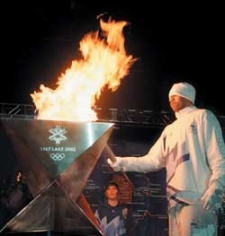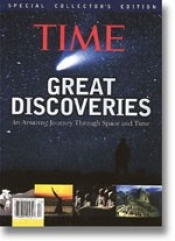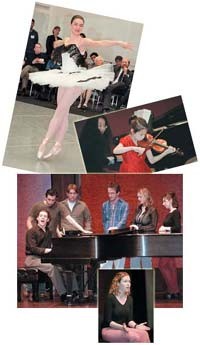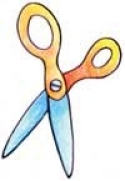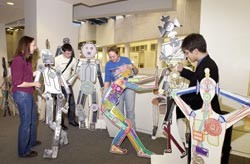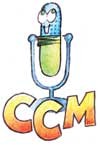Olympic sparks
The Olympic flame captured the attention of the world this winter in part because of embers sparked by UC. Amy Lukas, DAAP '95, helped design not only the "look" of the torch relay, but the entire games. Bill Kavanagh, DAAP '78, produced celebrations for both the relay and the games. And former Bearcat basketball star Kenyon Martin and other alumni carried torches in their hometowns.
Lukas was the design project manager for the organizing committee's "Look of the Games." Two and a half years ago, she and a team of 22 designers began developing Olympic logos, street and building banners, gateway towers, sports equipment, uniforms, mascots and even athlete imagery for 110 full-wrapped buses. "The list seems endless," she says.
In January 2001, Kavanagh, the owner of an L.A. production company, started working as manager of ceremonies in charge of special projects. First he produced major torch celebrations along its 65-day journey, including one on Dec. 4 for the flame's U.S. arrival in Atlanta with Muhammad Ali, a Christmas event in New York at Rockefeller Center and its final stop in Salt Lake City with Gladys Knight.
The bigger job was producing all the entertainment at various Olympic venues, including the location featuring NBC coverage for the "Today Show" and Jay Leno's "Tonight Show." "It's been an amazing experience, but I'm a titch exhausted," Kavanagh said by the eighth day.
As the games began, both Lukas and Kavanagh were also working on preparations for the Salt Lake 2002 Paralympics in March.
Among those fired up for the Winter Olympics were UC alumni torch bearers: The 6-foot-9 Kenyon Martin, now playing for the NBA's New Jersey Nets, finished the final leg of the Cincinnati relay by lighting the ceremonial Olympic cauldron in Paul Brown Stadium, and several days later, Clark Beck carried the torch through downtown Dayton. Faculty members Barbara Watts, associate dean of the College of Law, and Dr. Susan Schneider, assistant professor of clinical opthalmology, also were torch bearers.
Cancer-free
Although the phrase "cancer-free" always rings miraculous, it was even more so for Eugene Conrad. Late in 2000, he arrived at University Hospital's Barrett Cancer Center to become the second person in the world (and the first in this hemisphere) to receive a new treatment for his rare form of cancer, one that lodged a tumor between two vertebrae in his neck.
Untreated, the chordoma tumor easily could have damaged the spinal nerve, leaving him paraplegic or worse. Furthermore, the odds of it recurring after treatment were 50 percent.
After UC neurosurgery professor Harry Van Loveren removed pieces of deteriorated vertebrae, Conrad received a new treatment called stereotactic Intensity Modulated Radio Therapy. Five days a week for eight weeks, he traveled from Dayton, Ohio, to receive a 20-minute blast of concentrated radiation, computer-programmed to conform to the exact shape of the tumor. He then rested for four hours before receiving another dose of radiation.
Seventy treatments later, he was pronounced cancer-free. In March he celebrated the first anniversary of his last treatment.

 Past Issues
Past Issues